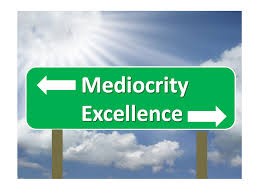 Over the course of a year, I would guess that Richard and I speak with over a hundred different leaders and managers of non-profits. Each one of them desperately wants to grow their major gift revenue.
Over the course of a year, I would guess that Richard and I speak with over a hundred different leaders and managers of non-profits. Each one of them desperately wants to grow their major gift revenue.
I mean, it’s what leaders are always talking about. “We have to grow major gifts.” Or, “We have to start a major gift program.”
Over 18 years ago when Richard first started working with non-profits to create, build and manage major gift programs, there wasn’t a lot of talk about major gifts. He and I came together because we knew that major gifts was one of the most under-served areas of fundraising.
Today, every non-profit leader is talking about major gifts. How do we get major donors? How to we obtain large gifts? What do we have to do to grow it?
It’s great that they are talking about it. The problem is that very few leaders actually want to change the way they are doing fundraising to make it work.
For example, some non-profit leaders are willing to hire a full-time MGO to start cultivating a caseload of donors, yet they have no desire to change the culture in the organization to support the MGO. Then they blame the MGO when the money doesn’t come in.
Or they say they really want to invest in major gifts, but they don’t support it with the right staff, and they leave it up to two or three half-time people to “fit in” major gifts in between everything else they do.
We have example after example of leaders who want major gift money, but they don’t want to change anything that requires hard work and resources.
The result of this is little to no growth in revenue, and a ton of donor and donor value attrition.
When I sit back and think about this, it gets me wound up. So many non-profit executives lament that they are not getting “big gifts” and they pressure their development directors to “get out and shake the trees,” yet they are not willing to do what it takes to actually create, build and manage a major gift program.
What probably happens is that once a leader finds out what it will actually take within an organization to do it right, they figure it’s too hard and go back to maintaining the status quo. Or, as I like to say, they start in the race toward mediocrity.
Yuck!
It’s amazing to me that with all the problems, injustices, hurt and anguish in this world that non-profits are trying to alleviate, we see so many non-profit leaders who don’t feel the urgency to make meaningful connections with major donors who could help them change the world.
Yet it’s happening in thousands and thousands of non-profits all around our country. Non-profit leaders are squandering an opportunity – both for their non-profit and their donors – by not cultivating, stewarding and serving those major donors.
Mediocrity is easy. Just keep doing the same thing day in and day out. Then you can blame development directors or major gift fundraisers when they don’t meet your revenue expectations. You do it all the time.
Or you can make a change. You can take a risk. You can do some hard work. That is what it will take from you if you actually want to lead.
Jeff
Search Blog Posts







Amen! Amen! Amen! Thank you!
The words of encouragement I needed.
You both are great mentors!
I agree that clearness and understanding of investing in relational fundraising is necessary for major gifts to flourish. Most nonprofits are hesitant to invest in risk and delay results; dare I say even measuring the wrong indicators–dollars with no sense.
I always turn to seek out pathways to further missions; both of the organization and the donor.